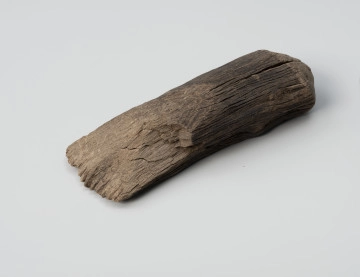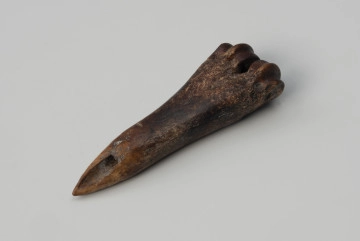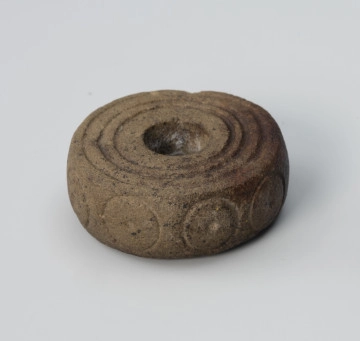
Scraper
1201 — 1225
National Museum in Szczecin
Part of the collection: Middle Ages
In the Middle Ages, tanned animal skin was used to make many everyday items, including footwear. Its popularity is evidenced by the huge number of shoe fragments and leather cuttings discovered in particularly large numbers at urban archaeological sites. Medieval leather footwear consisted of several parts: the sole, otherwise the bottom, and the top, constructed in different ways. The oldest footwear in Pomerania was made from a single piece of properly folded and stitched leather. The pressure of the foot when wearing this type of shoe made from one piece of leather caused a characteristic sole-like deformation. Over time, the bottom and top began to be cut out separately, as shoes with a separate sole could be used for longer – the damaged part was replaced with a new one. Over time, with the development of tanning techniques, soles began to be punched out of very thick, less flexible but more durable leather, different from the outer part. Leather footwear was worn by everyone, including young children, as evidenced by the varying sizes of soles discovered during archaeological excavations. The marks preserved on the bottoms of the shoes provide information on the ways in which the components of the shoes were sewn together – in this case, two-needle sewing – as well as on postural defects and foot deformities. Anna B. Kowalska
Author / creator
Object type
footwear
Technique
cutting out, hand sewing
Material
leather
Origin / acquisition method
legal transfer
Creation time / dating
Creation / finding place
Owner
Muzeum Narodowe w Szczecinie
Identification number
Location / status

1201 — 1225
National Museum in Szczecin

900 — 1100
National Museum in Szczecin

900 — 1100
National Museum in Szczecin
DISCOVER this TOPIC
Museum of King Jan III's Palace at Wilanów
DISCOVER this PATH
Educational path